
Planes Almost Collide At 2 Major Airports As Boeing Probe Advances
Authored by Jacob Burg via The Epoch Times (emphasis ours),
As the U.S. Justice Department decides whether to pursue a criminal case against Boeing, the Federal Aviation Administration (FAA) is investigating dozens of airplane incidents since January, including one in which a Swiss Air jet almost collided with four other planes on the runway at JFK International Airport in New York City.
 An air traffic control tower at JFK airport in New York City, on Jan. 11, 2023. (Michael M. Santiago/Getty Images)
An air traffic control tower at JFK airport in New York City, on Jan. 11, 2023. (Michael M. Santiago/Getty Images)The FAA has more than 100 aviation accidents and incidents since the beginning of 2024. These include airplane and helicopter crashes, equipment and mechanical malfunctions, and communication breakdowns with air traffic controllers that almost caused runway collisions at several major U.S. airports.
These incidents come as public scrutiny of Boeing increases after multiple issues have been reported with their jets. After an Alaskan Airways flight experienced a mid-air blowout of a door plug on Jan. 5, the Justice Department is considering revoking a 2021 deferred prosecution agreement with the company and pursuing a criminal case.
There is also growing criticism of Air Traffic Control (ATC) and the FAA’s hiring practices after multiple near-collisions were reported, including at JFK Airport and Reagan National Airport in Arlington, Virginia.
The JFK incident occurred on April 17. Pilots on a Swiss Air flight headed to Zurich, Switzerland, were forced to hit the brakes after the plane was cleared for takeoff because air traffic controllers simultaneously opened the runway for four other planes.
The next day, a similar incident played out at Reagan Washington National Airport, which services the Washington area. ATC cleared a JetBlue flight for takeoff as a Southwest Airlines flight was told to taxi across the same runway in front of it, according to ATC audio.
A runway controller cleared the JetBlue flight, while a taxiing controller cleared the Southwest Airlines flight. The two planes came within 400 feet of a collision before each controller ordered the planes to stop.
“JetBlue 1554 stop! 1554 stop!” said the tower controller, as the ground controller said “2937 stop!” to the Southwest Airlines plane.
Two airplanes—JetBlue and Southwest—nearly collided at DC’s Reagan National Airport on Thursday, avoiding each other by only 400 feet.
Air traffic control recordings show the moment controllers yelled at the JetBlue flight to “stop!” its takeoff.pic.twitter.com/Td1VTimVD0
— Julia (@Jules31415) April 19, 2024
Since sudden runway stops can overheat airplane brakes, the JetBlue flight was inspected before it safely departed the airport.
The agency said it is investigating both incidents.
Juan Browne, a Boeing 777 first officer pilot for a major U.S. airline company, told The Epoch Times that while the number of airplane accidents has remained steady, ATC incidents are “on the rise.”
He said the “primary driver” of this phenomenon is the “huge turnover” in the industry, as controllers retired during the COVID-19 pandemic. Many retired early, creating a “big shortage of people, pilots, and air traffic controllers,” and some, including pilots and others, retired due to vaccine mandates.
However, other factors leading to ATC communication breakdowns include diversity-focused hiring practices, a bottleneck in controller training, distractions, and pilot error.
Diversity Hiring Practices
Many, including aviation expert Kyle Bailey, have called out the FAA for prioritizing “diversity” in its hiring practices, alleging that hiring pilots or controllers based on their skin instead of their merit, can lead to safety issues.
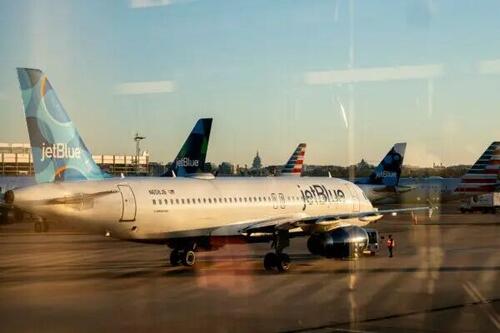 A JetBlue airplane at Ronald Reagan Washington National Airport in Arlington, Va., on March 9, 2023. (Stefani Reynolds/AFP via Getty Images)
A JetBlue airplane at Ronald Reagan Washington National Airport in Arlington, Va., on March 9, 2023. (Stefani Reynolds/AFP via Getty Images)“Diversity really has nothing to do with safe travel,” Mr. Bailey told Fox News Digital in January.
The aviation agency’s “Diversity and Inclusion webpage, last updated on March 23, 2022, says, ”Diversity is integral to achieving the FAA’s mission of ensuring safe and efficient travel across our nation and beyond.”
In its „Aviation Safety Workforce Plan, the agency explains this policy further.
“[Diversity] practices facilitate the organization in attracting and hiring talented applicants from diverse backgrounds and to meet future needs. A commitment to diversity and inclusion supports [aviation safety’s] strategic initiative to create a workforce with the leadership, technical, and functional skills necessary to ensure the U.S. has the world’s safest and most productive aviation sector.”
Later, the agency discusses how this can impact operations.
“The projected growth in demand and diversity from conventional customers, as well as new entrants in non-traditional areas will challenge the FAA’s ability to provide responsive and consistent service to our stakeholders, the report reads.
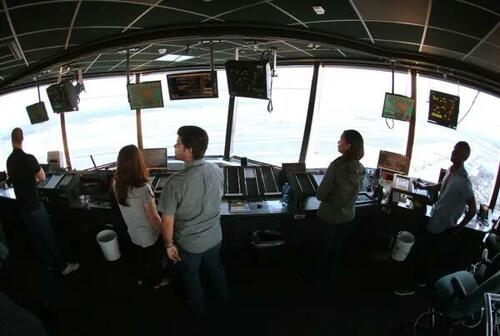 Air traffic controllers keep watch at Miami International Airport in Fla., on March 6, 2017. (Joe Raedle/Getty Images)
Air traffic controllers keep watch at Miami International Airport in Fla., on March 6, 2017. (Joe Raedle/Getty Images)In February, a coalition of 11 Republican attorneys general, led by Kansas Attorney General Kris Kobach, submitted a letter to the FAA alleging that diversity hiring practices could put passengers’ lives at risk.
“It seems that the FAA has placed ‘diversity bean counting over safety and expertise, and we worry that such misordered priorities could be catastrophic for American travelers, Mr. Kobach wrote in the letter.
“Millions of Americans place their lives and the lives of their loved ones in the hands of your agency … Unfortunately, the Biden FAA, under your administration, appears to prioritize virtue-signaling ‘diversity efforts over aviation expertise. And this calls into question the agency’s commitment to safety, he added.
The letter accused the Obama administration of seeking out applicants with “severe intellectual” and “psychiatric” disabilities, noting that the FAA’s “Diversity and Inclusion” webpage currently has the same language on it.
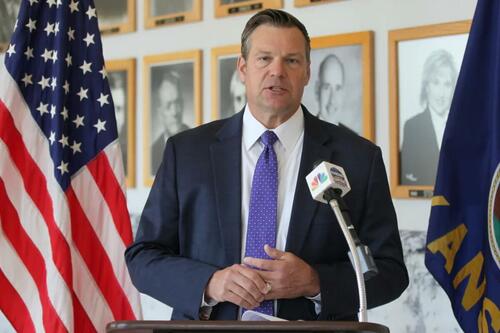 Kansas Attorney General Kris Kobach during a news conference outside his office in Topeka, Kan., on May 1, 2023. (John Hanna/AP Photo/ File Photo)
Kansas Attorney General Kris Kobach during a news conference outside his office in Topeka, Kan., on May 1, 2023. (John Hanna/AP Photo/ File Photo)Mr. Browne, who has been a commercial pilot for 25 years, told The Epoch Times that there is a big drive towards on-the-job diversity in all U.S. industries, and aviation is no different.
“I can’t speak specifically to what those requirements are at the FAA ATC program, but we definitely need to ask ourselves: Are we hiring and training the correct people for the jobs?” he asked.
“How are we getting the most qualified applicants out there to fill these jobs?”
Retirements and Training ‘Bottleneck’
Another factor leading to issues with ATC is the sheer volume of retirements in the aviation industry during the pandemic, Mr. Browne said.
He explained that some pilots and air traffic controllers were close to retirement age when the pandemic started, with many deciding to retire early. This created a shortage of applicants and now a shortage of active workers, as both the FAA and ATC struggled to keep up when a waning pandemic caused airline travel demand to increase.
“So we got a lot of new folks out there on the job right now, a lot of on-the-job training going on right now. And a lot of mistakes being made up there as well,” he said.
Some also retired early because they declined to take the mRNA COVID-19 vaccine when it was briefly mandated by the FAA, Mr. Browne added.
 Syringes filled with COVID-19 vaccines sit on a table at a vaccination clinic in a file image. (Justin Sullivan/Getty Images)
Syringes filled with COVID-19 vaccines sit on a table at a vaccination clinic in a file image. (Justin Sullivan/Getty Images)With these early retirements came limited training opportunities and a “shortage of qualified controllers.”
“There was a big bottleneck in training throughout the aviation industry, whether it was for pilots or for air traffic controllers who have trained up in Oklahoma City, the home of the FAA,” Mr. Browne said.
“And so, now, the FAA is trying to do more with less.”
He explained that the agency is working its current and new controllers “much harder and longer hours than they have in the past” to “backfill” the demand after airlines quickly and unexpectedly recovered from the pandemic. This “exacerbated the shortage of both pilots and air traffic controllers,” Mr. Browne said.
In a statement to The Epoch Times, the FAA disputed the claim that there were “excessive controller retirements during the pandemic.”
Distractions, Infrastructure, Budget Issues
As a Boeing 777 pilot, Mr. Browne mostly flies overseas. When he flies into cities like London or Sydney, he says the radio channels through ATC are “a lot less chaotic” and more “organized” compared to the United States.
“Here in the States, we’re pushing so much material, so many aircraft through such a tight system and dealing with weather constantly,” he explained.
“And yet, there seems to be a lot of miscommunications between different members of the staff, for example, ground controllers versus tower controllers.”
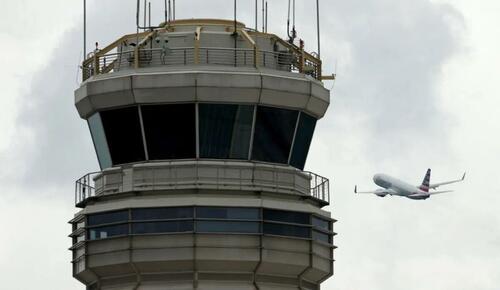 A plane passes the air traffic control tower at Ronald Reagan Washington National Airport in Arlington, Va., on June 5, 2017. (Kevin Lamarque/Reuters)
A plane passes the air traffic control tower at Ronald Reagan Washington National Airport in Arlington, Va., on June 5, 2017. (Kevin Lamarque/Reuters)It was a miscommunication between ground and tower controllers that resulted in the near-collision at Reagan Washington National Airport on April 18.
Mr. Browne said he often hears a lot of background noise coming over the radio from within the control towers. Pilots are instructed to maintain a “sterile cockpit” whenever they’re below 10,000 feet, he explained. That means pilots must refrain from any conversation outside plane operations until they reach that altitude to “avoid distractions.”
“Is that not the case with the ATC?” Mr. Browne asked.
He explained that working in ATC can be a boring job, so it’s “human nature to get distracted, to do something else to break the monotony,” even if it’s critical to avoid this to prevent putting passengers’ lives at risk.
However, it’s not just distractions leading to issues with coordinating plane routes on runways. The infrastructure throughout the aviation industry struggles to keep pace with the growing demand for air travel.
Mr. Browne explained that ATC, airports, runways, plane parking access, and the number of gates were all designed for “a lot less traffic.”
“But in general, where we are, the demand is outstripping the capacity of the system. And that leads to, in the case of the FAA controllers, a lot of overtime and a lot of tired controllers on the job,” he added.
There are also budget concerns for ATC. Mr. Browne wonders if Congress is allocating enough funds to keep pace with air travel demands but said that question is up to congressional leaders to consider.
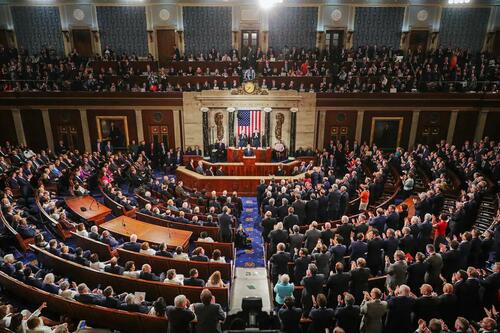 A plane passes the air traffic control tower at Ronald Reagan Washington National Airport in Arlington, Va., on June 5, 2017. (Kevin Lamarque/Reuters)
A plane passes the air traffic control tower at Ronald Reagan Washington National Airport in Arlington, Va., on June 5, 2017. (Kevin Lamarque/Reuters)Lastly, pilots are sometimes at fault as well for aviation incidents, he explained.
Mr. Browne said there are multiple factors worth considering in addressing these problems. Not only could Congress increase the FAA’s budget, but ATC can be more transparent when there are incidents like the ones on April 17 and 18.
When pilots make significant mistakes, a full investigation commences immediately. But for air traffic controllers, it’s not always the same approach, Mr. Browne said.
However, the most significant factor is getting the best applicants for pilot and air traffic controller positions.
“Make sure we’re hiring the right people for the job, regardless of who they are or what they are. Make sure you’re hiring the most qualified people for these very demanding jobs,” Mr. Browne added.
“If we continue to perform at this level, [these incidents] will eventually lead to a disaster.”
The FAA told The Epoch Times that it is working to address some of these issues, but did not specifically comment on the “diversity hiring” allegations.
“Hiring highly qualified air traffic controllers is a top priority at the FAA. Every FAA-certified air traffic controller has gone through months of screening and training at the FAA Academy, and that is before another 18-24 months of training to learn specific regions and airspace.
“There is a well-known national shortage of air traffic controllers and the FAA has ramped up outreach to ensure no talent is left on the table. We are accelerating the pace of recruiting, training, and hiring to meet demand while maintaining the highest qualification standards,” the agency said in a statement.
Tyler Durden
Fri, 04/26/2024 – 17:00














